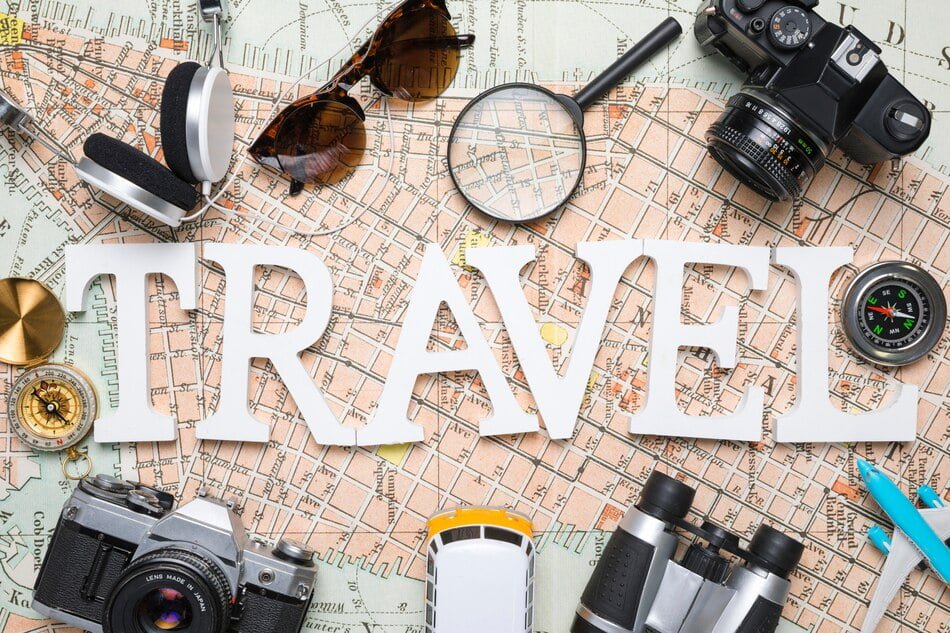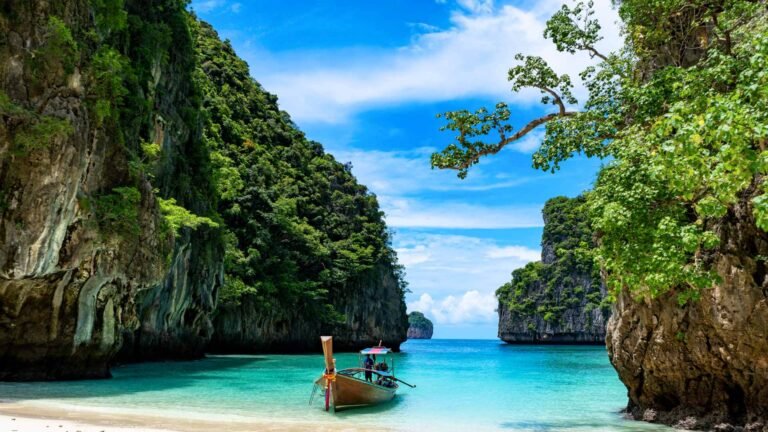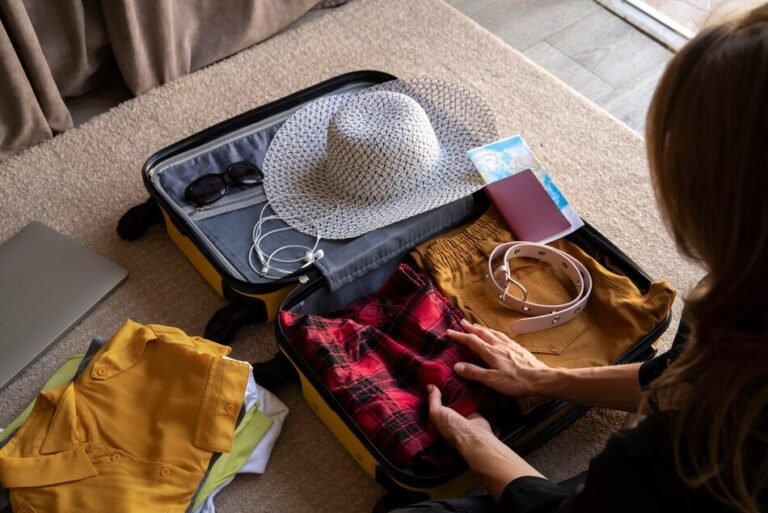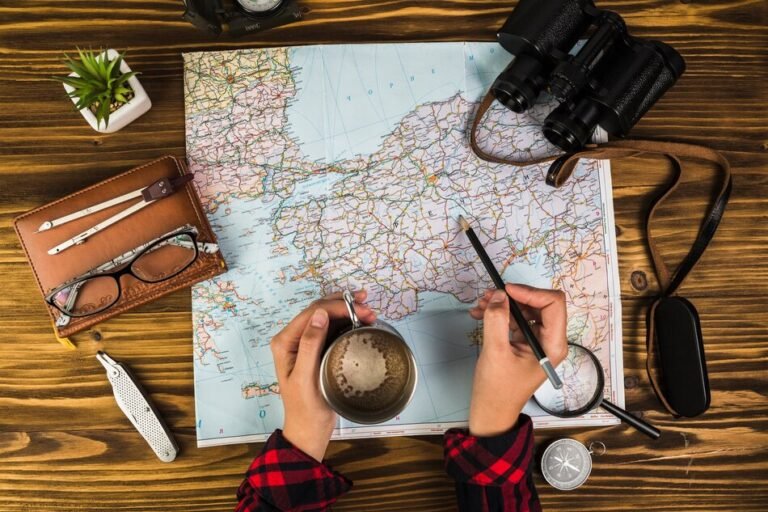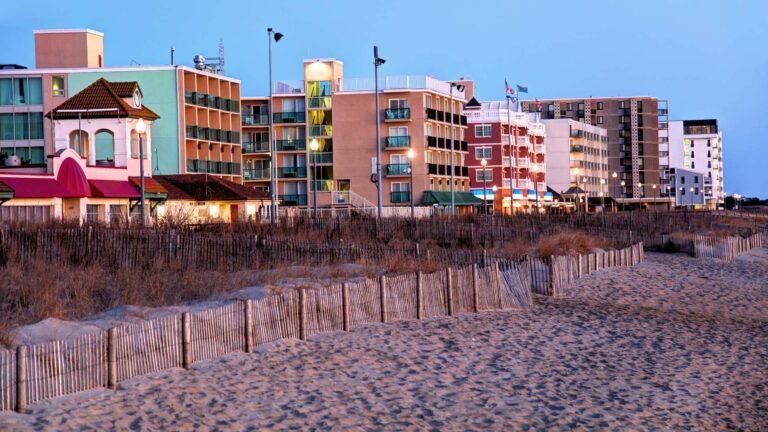How To Create An Engaging Travel Brochure For 2024
Foreign tourism is expected to recover to pre-pandemic levels in 2024. The latest statistics indicate that worldwide tourism reached 88% of pre-pandemic levels, with an expected 1.3 billion tourists. Today is the most fantastic time for travel marketers to review and update their content marketing plans for the season.
The good news is that travel brochures and guidebooks are not reserved for hotels and resorts. Tourist destinations like museums, small shops, and nature preserves might profit from brochures! To boost your trip season promotion, we’ll discuss how to create travel brochures and guides for various tourist destinations and landmarks.
What Is A Travel Brochure?
Travel brochures promote destinations, attractions, and tours. Brochures may excite travelers to visit and inform them what to do once they arrive. Create printed and online travel brochures to cater to a larger audience. Some visitors prefer reading your printed brochures at your office. Others will want your online brochure or to find it online and browse it at home. Creating online vacation brochures gives you many new information presentation options:
- Make your website stand out with interactive elements like page flip effects, movies, GIFs, pop-ups, picture galleries, and outbound links. You can make your brochure an engaging reading experience and increase reservations and sales.
- Customize your brochure with corporate colors, logo, favicon, and distinctive backdrop to increase brand exposure.
- It helps you distribute material effortlessly using direct links. Plus, you can integrate a trip brochure into your website and distribute it on social media or via a QR code.
We can help you develop an online trip brochure without a PDF. Create free brochure Canva templates and start making trip brochures right now. It integrates with Canva, enabling seamless PDF creation and publication with customizable and interactive features.
Main Features For Including In Your Travel Brochure
To maximize efficiency, a travel brochure or digital travel guide should contain the following:
- Destination information: include details on the place, including its history, culture, attractions, and activities.
- High-quality photos display the destination’s attractiveness to persuade readers to come.
- Detailed map: highlight local landmarks, attractions, and places of interest.
- Accommodation alternatives: give information on various accommodation options, such as hotels, resorts, and vacation rentals.
- Transit: include airport, rail, and public transit information.
- Activities and excursions: List local sightseeing and outdoor and cultural trips.
- Dining options: provide information about local food, prominent restaurants, and regional dining experiences.
- Travel advice: include currency conversion rates, local traditions, and safety considerations.
- Contact information: include the contact details of local tourism offices, hotels, excursion operators, and other pertinent businesses.
- Call to action: Use a call to action, such as a special offer or discount code, to entice readers to reserve their vacation.
Destinations, tours, theme parks, and other travel brochures exist. Cruise brochures are popular. Include a cruise itinerary in your brochure. It’s crucial to every cruise guide since it lists the key ports of call, cruise length, and unique excursions or activities. Highlight the ship’s amenities, including restaurants, bars, entertainment, and amusement. Give photos and descriptions of each cruise cabin category.
Read Also: Best Travel Budget Apps For 2024
Step-by-step Instructions For Creating A Travel Brochure
- Choose Eye-catching Images
Visualization is critical to tourism. When we think about vacations, we envision sandy beaches, broad oceans, ancient, charming villages with cobblestone sidewalks, gorgeous mountains, and rich blue skies. Your tourist brochure should feature high-quality professional photos that evoke emotion and help readers imagine themselves in their dream destinations.
Your brochure should show a diversity of your attractions. Visitors may view all the beaches, parks, gardens, or museums. Photograph your most popular foods or exhibits if your firm is a café or museum.
- Match Colors To Images And Text
Colors also set the mood for your trip brochure. Highlight photographs in tropical brochures with vibrant blue, green, and yellow. Use peaceful, pastel hues to make your museum brochure simpler to read. Have you got the idea? A trip guide sample to inspire you.
- Write Descriptive Copy
Write compelling picture descriptions to enhance your trip guide. Be polite, sincere, and passionate in your writing. Make it brief and concise so readers may quickly understand the essential points. Use subtitles, bullet points, and other design features to help travelers skim the material. Here are some copywriting suggestions:
- Share local advice: Including local recommendations might make a vacation brochure more appealing. This type of information is more complex to come by, which makes it much more valuable. Ask locals about their favorite cafes, stores, and picnic spots. You may also share travel tricks like where to find cheap trains, flights, and taxis. Your readers will enjoy your information’s uniqueness.
- Include reviews: today, before booking a vacation, visitors prefer to read evaluations from other travelers rather than official brochures, and they are far more inclined to trust information provided by their peers. You may ask customers for permission to post reviews online. Trust and reservations will grow this way.
- Highlight your benefits: When deciding where to go, tourists consult a variety of travel brochures and booklets, and the industry is quite competitive. To distinguish yourself, explain your perks, price and discounts, unique venues, special entertainment, etc. Show your readers why they should select you.
- Give Location And Contact Info
Include your attraction’s address and phone number on the cover. Include detailed instructions to your destination in the travel guide. Make it simple for readers to reach you by phone, email, or website. Maps are essential to travel brochures.
Add a broad map at the beginning of your brochure for reference and more particular maps in the subsequent sections for local information. Our post on designing a tourist brochure and travel guide can encourage you to generate travel material and enjoy the new tourist season. Good luck!

